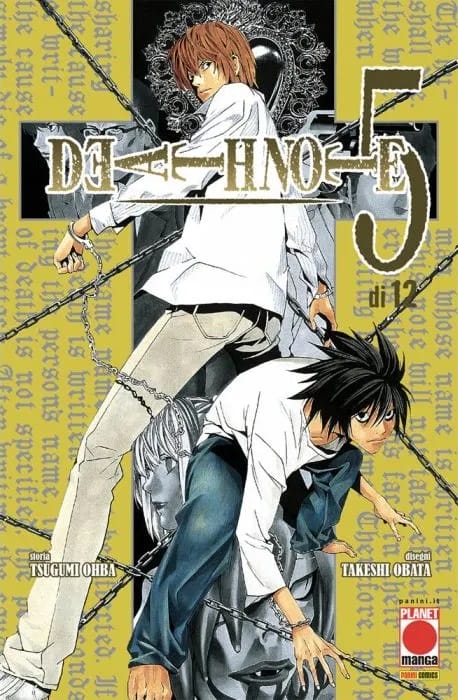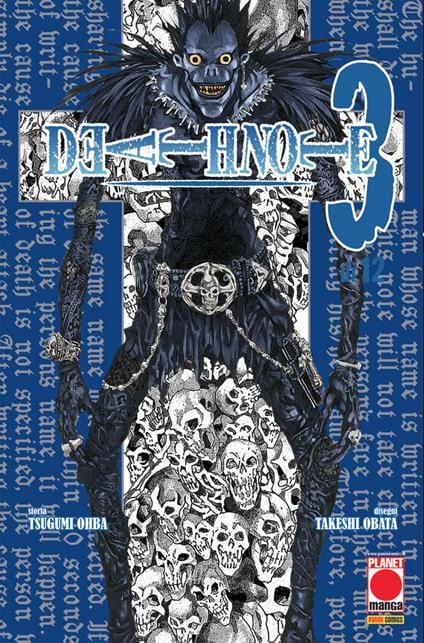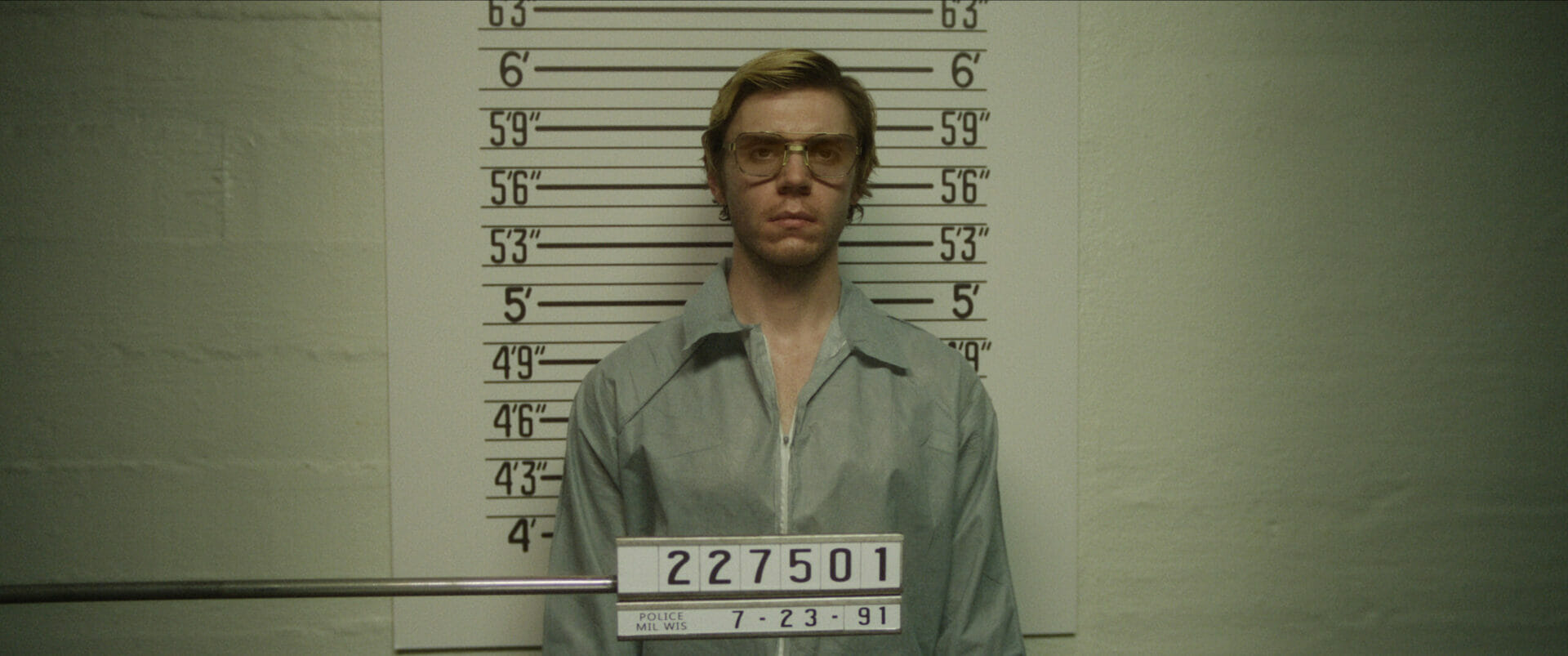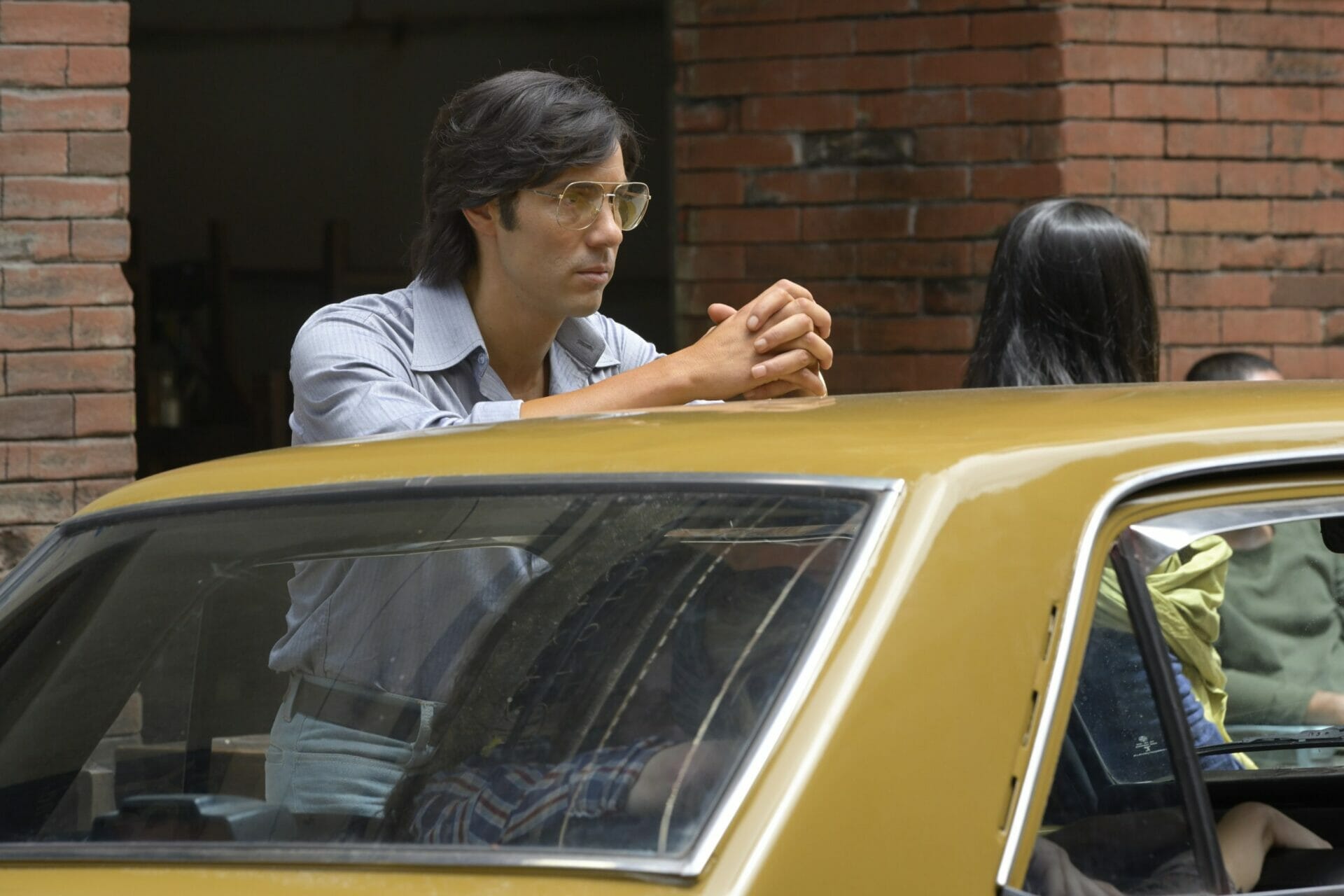
Death Note | The moral dilemma of justice
Year
Format
By
Fighting crime and making the world a better place is the premise of many stories, including the one in Death Note. But the protagonist Light Yagami takes this theme to the extreme since he wants to decide for himself what is good or evil.
The core of the story focuses on how far someone is willing to go to achieve their goal, even if this entails using the cruellest means and the most outrageous compromises. In doing so, Death Note presents itself as a critical look at the concept of justice and the feasibility of a utopian world, drawing inspiration from both Christianity and Japanese folklore and cultural context. As Light Yagami takes on the role of an almost messianic figure, perceiving his quest for justice to be a divine mission, themes like free will and divine punishment take center stage throughout the whole story.

Death Note is a shōnen manga created in Japan in 2003 by the pen of Tsugumi Ohba and the drawings of Takeshi Obata, published by the Shūeisha publishing house in the magazine Weekly Shōnen Jump until 2006 and then collected in twelve volumes. It became one of the most successful manga worldwide, still considered a work of great cultural influence today.
“The human whose name is written in the Death Note shall die”
The protagonist of Death Note, Light Yagami, radically transforms his model student life when he comes into possession of a Death Note, a magical notebook that gives him the power to kill anyone by writing their name inside it. It belongs to the world of the shinigami, the Japanese gods of death. It was one of them, Ryuk, out of boredom, who threw the notebook down to Earth for pure pleasure and fun, curious to know how humans would use it.
Light, instead of exploiting the object for personal purposes, decides to use his new ability to eliminate criminals and threats to society, aspiring to improve the world, hiding his assassin’s identity under the name Kira. His actions soon attract the attention of the Japanese authorities, as well as Interpol and the legendary detective L, who works hard to unmask Kira’s identity and bring him to justice. The hunt between Light and L becomes a complex game of chess, an intellectual duel that involves the entire world, similar to what happens between Sherlock Holmes and Moriarty, with each trying in every way to anticipate the other’s moves. While Light justifies his actions as a means to achieve utopia, L seeks to reveal the identity of the mysterious vigilante and end his impunity.
The ideal of justice
In Death Note, Light Yagami’s evolution from a self-proclaimed savior to a god of sorts on Earth is a profound exploration of issues of justice and morality. Initially motivated by the desire to rid the world of criminals, Light justifies his drastic actions by overly embracing the idea that the ends justify the means. His belief in self-perfection and a self-attributed superiority due to his high intelligence leads him to consider himself above the moral constraints that bind ordinary individuals.

As the character evolves, Light increasingly identifies himself as a divine arbiter of justice, creating clear parallels with Christian symbolism, even if in a somehow perverted way. Especially chapters and volumes covers show him in poses clearly hinting at Jesus Christ and they also incorporate elements connected to Christianity like crosses or apples. But crosses, for example, frequently appear within panels too, subtly integrated into background scenes, symbolizing themes of sacrifice or moral judgment. Whether Kira is a god or a devil is up to the reader to decide, based on their own moral compass, as stated by the creator of Death Note, Tsugumi Ohba.
In contrast to Light’s divine aspirations, L, the detective, embodies a more humanistic approach to justice. His unwavering dedication to upholding the value of humanity, even in the face of darkness, places him as the antithesis of Light’s deity complex. Kira is a murderer, so he must be arrested like any other criminal.
In an ironic twist, the only true deity in this narrative is Ryuk, the indifferent and apathetic shinigami, who observes the unfolding drama with detachment, embodying the impartial observer par excellence.
Death Note‘s style
Takeshi Obata, the artist of Death Note, was already a well-known figure in Japan before the manga’s inception, but the series propelled him to even greater international acclaim. Obata’s distinctive yet versatile artistic style, rooted in traditional manga techniques using tools like the G-Pen and ink, is characterized by delicately thin and precise freehand-drawn lines. Notably, he pays meticulous attention to facial colors, often delineating faces without heavy lines and manipulating light effects. This focus extends to the depiction of hair, featuring multiple layers of strands for dynamism, and intricately detailed clothing with folds, wrinkles, and interplays of light and shadow.
Religious iconography is integrated into character designs and settings too. For example, shinigami like Ryuk possess an otherworldly appearance, obtained by mixing angelic elements, like halos and wings, mixed with scary body shapes and faces. Obata blends traditional gothic elements with a subtle nod to celestial beings, reinforcing the overarching theme of life and death. Throughout the manga, strategically placed skulls, dark hues, roses, and thorns symbolize life-or-death decisions, illustrating the intertwined nature of beauty and danger in the pursuit of justice.
Obata asserts that the artistic style of every manga should encapsulate the essence of the story. As a matter of fact, his work other work with Ohba, Bakuman, where protagonists aspire to become manga artists, showcases brighter colors and panels filled with comic-style onomatopoeias.
Who won in the end?
Spoiler alert!!
Halfway through Death Note, the narrative takes a turn with the death of one of the main protagonists and the entry of Mello and Near, who partecipate in the fight against Kira. In the final confrontation, it is Near who emerges as the winner, witness to Light’s defeat, whose final fate is death. Despite the apparent triumph of justice, Death Note is made up of nuances, and therefore so is its ending.

On the one hand, Near and his predecessor L can be considered winners, having discovered the truth and stopped a murderer. On the other hand, with Kira crime rates were at an all-time low. After his death, many mourn him, and criminal actions resume. That being so, Light was actually creating a better world. This fact is even more unsettling as in the end the reader finds out the figure of Kira gave birth to a cult which adores and prays to him.
And then there’s Ryuk, the shinigami, the one who started it all for fun, bored from eternity. He achieved his goal: to spend his best years as a spectator of increasingly complicated and dramatic events. Ultimately, he wrote Light’s name into the Death Note, killing him because his time had simply come. As he would have done with any other man. In the eyes of a true god of death, there are no winners or losers. Only men.
Beyond Death Note
Death Note extends its impact far beyond its original publication. Its success paved the way for additional chapters, shedding light on the manga’s creation and offering fans a deeper understanding of its universe. The story of Light and L transcended into diverse media, including television, anime adaptations, live-action renditions, musicals, doramas (Japanese dramas), novels, and even interactive formats like video and board games.
Death Note‘s influence is not without controversy. The series sparked debates and prompted censorship due to its potentially impactful content on young minds. Instances of real-world actions purportedly inspired by the manga raised ethical questions about the responsibility of creators and the influence of fictional narratives on society.
Despite these complexities, Death Note endures in public discourse. The release of The a-Kira Story in 2020, in which the shinigami Ryuk searches for a new owner for the notebook, further exemplifies the series’ lasting resonance. As the narrative delves into the consequences of wielding immense power, it invites readers to reflect on the nuances of morality, justice, and the unpredictable facets of human nature. Ultimately, Death Note‘s enduring legacy lies not just in its gripping storyline but in the conversations it continues to ignite surrounding power, responsibility, and the intricate interplay of fiction and reality.
Well, it was good while it lasted. We killed some boredom, didn’t we? We did some various and interesting things.
Ryuk from the Death Note anime
Tag
Buy a ☕ for Hypercritic









